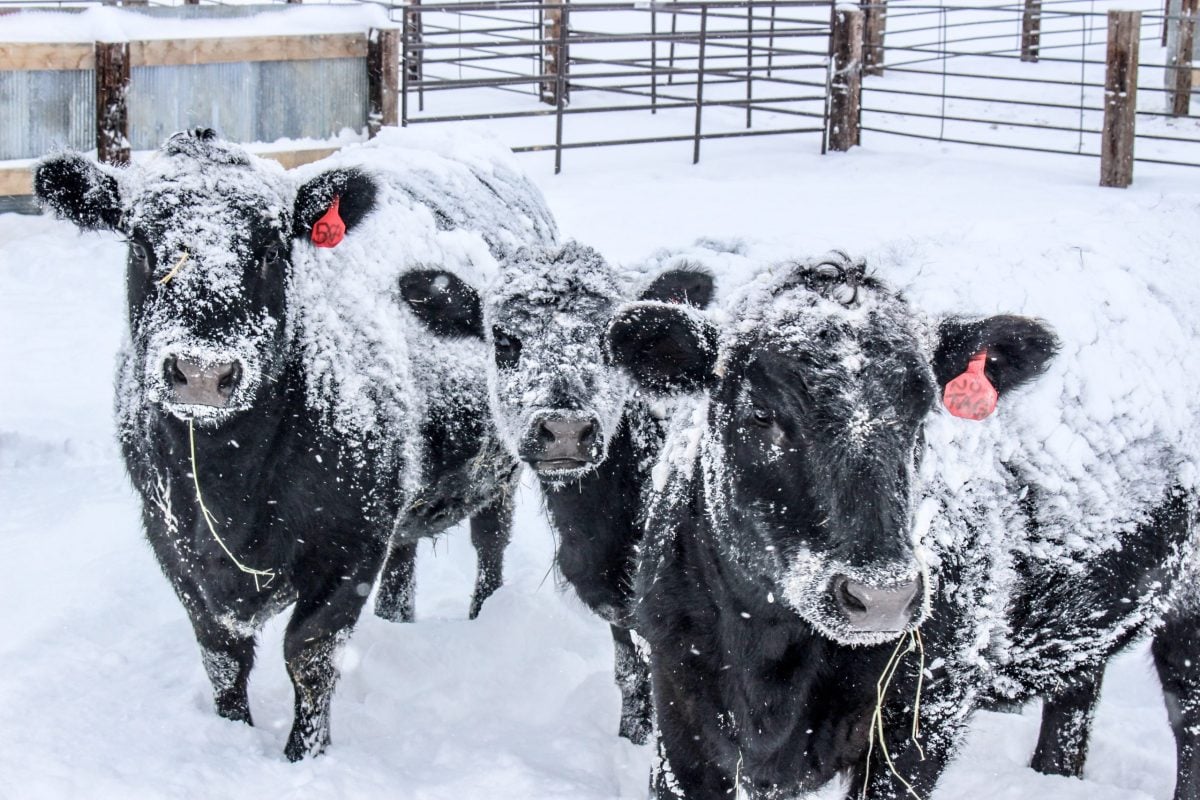Chicago corn tumbled to its biggest two-day drop since mid-1996, touching the lowest price in nine months, as larger-than-expected U.S. stockpiles weighed down the market.
Pressured by corn, Chicago wheat also registered its lowest nearby price in nine months, and soybeans touched a nearly three-month low.
Chicago Board of Trade May corn fell 53 cents or 7.6 per cent at $6.42-1/4 per bushel, touching the lowest price since late June and flirting with its expanded daily limit of 60 cents (all figures US$).
The nearby contract slid 12.6 per cent over two days.
Read Also

U.S. livestock: Cattle rise, lean hogs mixed
Chicago lean hog futures ended Tuesday mixed while cattle made gains. Most-active February lean hog contracts closed down 0.475 cents…
Corn sagged on selling by hedge funds, said Arlan Suderman, a senior market analyst at Water Street Advisory. “I think this market is going to stay softer awhile yet.”
CBOT floor sources said funds have sold 75,000 CBOT corn contracts over the past two days or 375 million bushels of corn, which represents over 35 per cent of last year’s U.S. crop.
The outlook is not so bearish for new-crop corn contracts, however, with most of the planting season ahead.
September and December corn fell more modestly after the U.S. Department of Agriculture’s forecast last week for U.S. farmers to sow 97.3 million acres was in line with expectations.
“The stocks report certainly is taking precedence because of the correction in the bull spread,” Mike Zuzolo, president of Global Commodity Analytics said, referring to positions that were long nearby corn and short new-crop months.
USDA surprised the market with forecasts for old-crop corn supplies, estimating the stockpile at the lowest in nine years, which beat the average estimate of the lowest in 15 years.
It pegged corn stocks as of March 1 at 5.399 billion bu., above the average analyst estimate of 5.013 billion bu. USDA also said farmers would plant the highest corn acreage since 1936.
Although corn and soybean stocks were larger than expected, three years of declining production have depleted supplies, leaving little leeway for a bad harvest. March 1 stocks for both crops were the smallest total on that date since 2004.
Cold weather this week in the U.S. Midwest and showers in the Plains hard red winter wheat region will slow early corn plantings, but also help boost wheat production prospects, agricultural meteorologist Kyle Tapley of MDA Weather Services said on Monday.
“Next week temperatures will be warming and it will be drier in the Midwest, so there is improved planting weather,” Tapley said. “And rains will be increasing in the Plains so that will help the wheat crop.”
The colder weather in the short term helped underpin new-crop corn prices and may have left wheat primed for a short-covering rally, Zuzolo said.
CBOT May soybeans gave up 14 cents or one per cent to $13.90-3/4 a bushel, on the bearish USDA stocks data and long liquidation.
USDA’s estimate for soybean stocks of 999 million bu. was seven per cent larger than the average trade guess, and also topped even the most bearish forecast.
May wheat lost 23-3/4 cents or 3.5 per cent to $6.64/bu.
Investment bank Goldman Sachs added to the bearish mood on Monday by lowering its price forecasts for corn, soybeans and wheat, citing the larger than expected stocks, trade sources said. Goldman lowered its three-month price forecast for CBOT corn futures to $6.50/bu. from $7.50 previously.
For CBOT soybeans, Goldman lowered its three-month price forecast to $13.50/bu. from $14 and cut CBOT wheat’s outlook to $6.50 from $7.80.
USDA grain export inspection data, which measures the volume cleared at ports or in position to be exported, came in higher than a range of trade estimates for corn (19.1 million bu.) and wheat (25.7 million bu.). Soybean inspections of 16.3 million bu. were in line with expectations.
The worst drought in over 50 years has left the U.S. Plains wheat crop struggling against dry soils. Rains now would help the crop get off to a good start after winter dormancy.
Plantings of all varieties of U.S. wheat were estimated at 56.4 million acres, up one per cent from last year, while stocks of wheat were up three per cent from a year ago. Wheat stocks, at 1.234 billion bu., were five per cent larger than expected.
Large speculators raised their net long position in CBOT corn and soybean futures in the week to March 26, ahead of the USDA report, regulatory data showed.
— Rod Nickel is a Reuters correspondent based in Winnipeg. Additional reporting for Reuters by Sam Nelson and Michael Hirtzer in Chicago and Naveen Thukral in Singapore.














